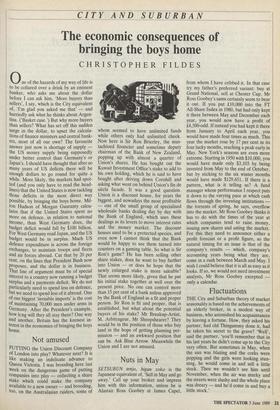Nuts in May
SETSUBUN tenjo, higan zoko is the Japanese equivalent of, 'Sell in May and go away.' Call up your broker and impress him with this information, unless he is Alastair Ross Goobey at James Capel,
from whom I have cribbed it. In that case try my father's preferred variant: buy at Grand National, sell at Chester Cup. Mr Ross Goobey's sums certainly seem to bear it out. If you put £10,000 into the FT All-Share Index in 1980, but had only kept it there between May and December each year, you would now have a profit of £4,500-odd. If instead you had kept it there from January to April each year, you would have made four times as much. This year the market rose by 17 per cent in its four lucky months, reaching a peak early in May. New York's seasons are even more extreme. Starting in 1950 with $10,000, you would have made only $3,103 by being invested from May to the end of October, but by sticking to the six winter months would have made $129,651. If there is a pattern, what is it telling us? A fund manager whose performance I respect puts it down to the varying pace at which cash flows through the investing institutions the torrents of spring, he says, overflow into the market. Mr Ross Goobey thinks it has to do with the times of the year at which companies tend to raise money, issuing new shares and sating the market. For this they need to announce either a profit forecast or a profit figure, so the natural timing for an issue is that of the company's results — which, company's accounting years being what they are, come in a rush between March and May. I wish I could believe that it is all as easy as it looks. If so, we would not need investment analysts, Mr Ross Goobey excepted only a calendar.


















































 Previous page
Previous page